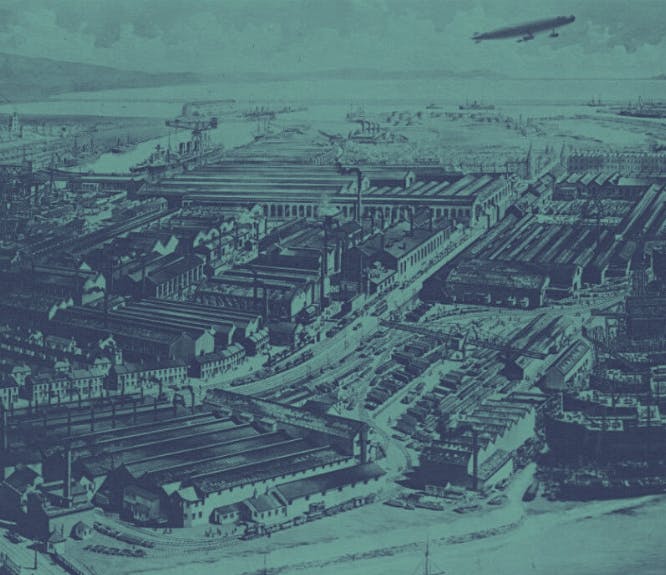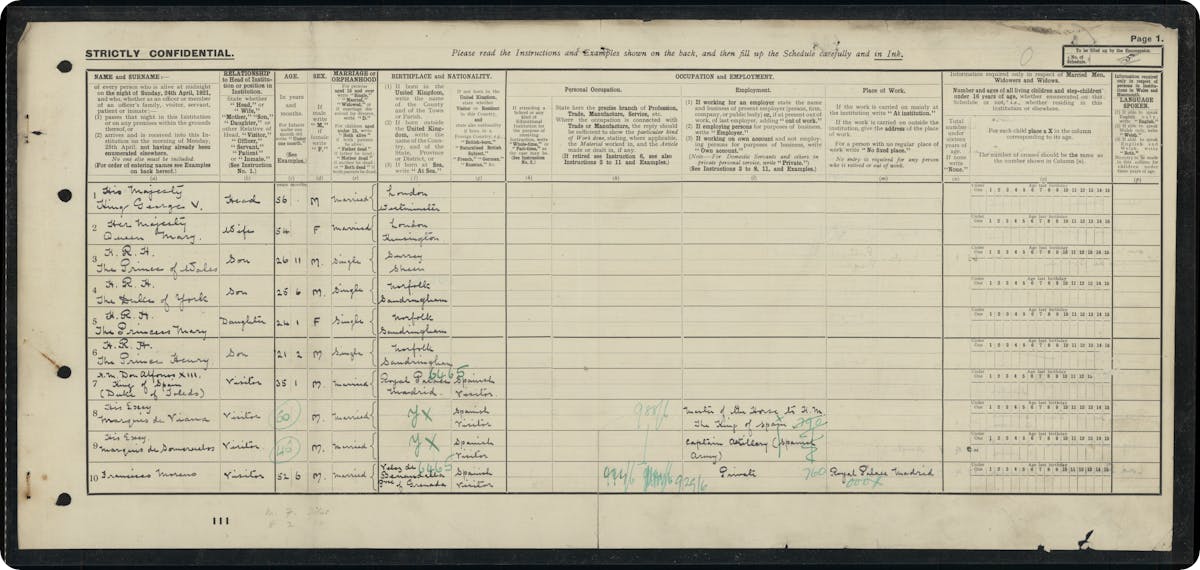Where were the Royal family living in the 1921 Census?
10+ minute read
By Ellie Ayton | October 11, 2022
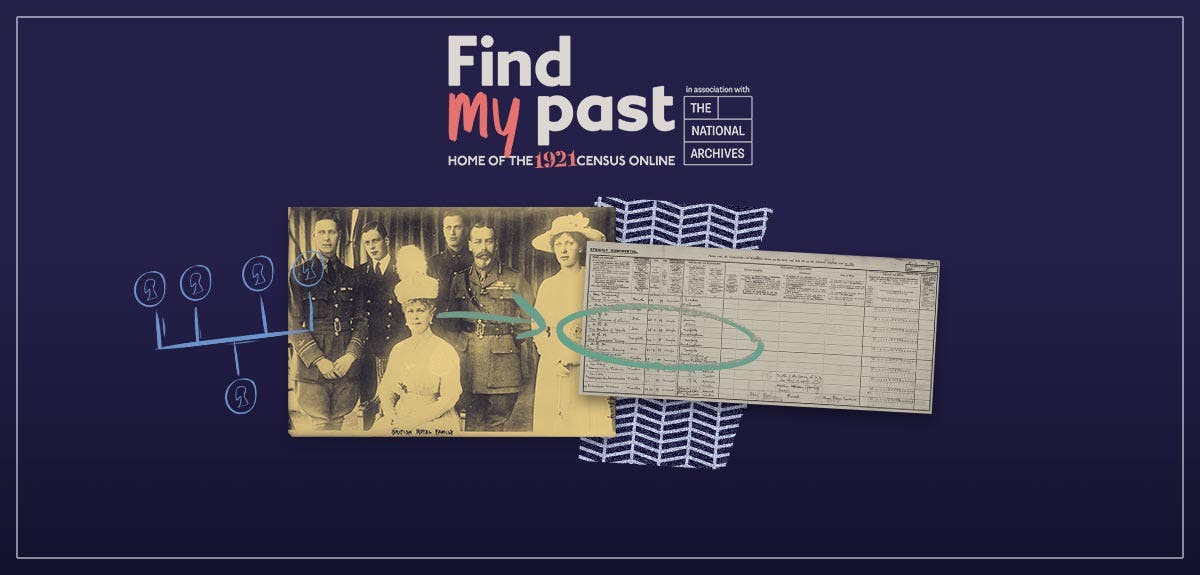
Just like every other person in England and Wales, on 19 June 1921 the Royal family were recorded on the 1921 Census. What secrets does their Census return uncover?
The Census is a snapshot of life in 1921, even for the Royal family. We learn their ages, places of birth, and who they were living with 100 years ago. To get even more detail, we can check other family history records such as historical newspapers and the 1939 Register. Together, these genealogy records can build a picture of your ancestors.
There truly is no end to the secrets and surprises hidden in the 1921 Census, and now there is no limit to the access you can enjoy - all you need is a Premium subscription.
In the case of the Royals, while King George V and Queen Mary were shown visiting the fictional Downton Abbey in the 2019 film of the same name, 19 June 1921 saw the Royal family overnight at Windsor Castle. The royal Census return was filled in by Sir Derek Keppel, Master of the Household. He’d been in the service of the king since 1893, confirmed by our Royal Household Staff records.
As you might imagine, there were other people staying at Windsor Castle too, from fellow rulers and visiting dignitaries, to servants and equerries.
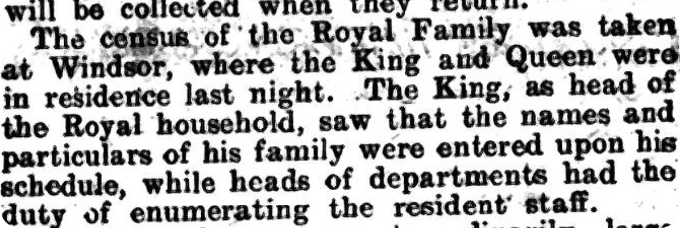
A mention of the Royal family’s Census return from the Illustrated Police News, 23 June 1921.
So, here’s who was bunking with the royals on the night of the 1921 Census for England and Wales.
The Royal family
In 1921, the King of Great Britain and Ireland was George V, grandson of Queen Victoria and Prince Albert, son of Edward VII and Alexandra of Denmark. Like his granddaughter, Queen Elizabeth II, whose family tree you can find here, he was never meant to become king.
His elder brother Albert Victor, the heir to the throne, died in 1892 during an influenza pandemic. George married his brother’s intended, Mary of Teck, in 1893. Overnight, George had become Prince of Wales. When his father Edward VII died in 1910, George ascended as George V.

George and Mary on their wedding day in 1893, from The Sketch, 19 December 1928.
George was linked by blood to many other European royal houses. He was cousin to both Wilhelm II of Germany and Nicholas II of Russia. The latter was killed in 1918 following the Russian Revolution.
King George appeared at the opening session of the Parliament of Northern Ireland to appeal for conciliation not long after the 1921 Census was taken. Then in 1922, the King visited First World War cemeteries and memorials in Belgium and France. Throughout the 1921 Census, we can see glimpses of the effects of the Great War, from unemployment and disability, to calls for help.
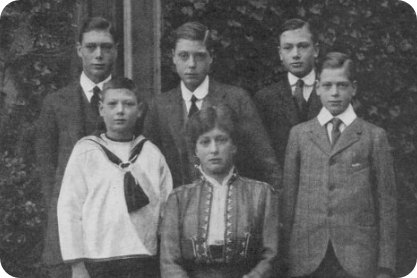
The children of George V and Queen Mary, pictured in The Sphere, 25 January 1919, shortly before the death of Prince John. Back row: Albert (later George VI), Edward (later Edward VIII), and Prince Henry. Front row: Prince John, Princess Mary, and Prince George.
All of George and Queen Mary’s children appear with the household on the 1921 Census, apart from two. Their fourth son, Prince George, was with the Royal Navy in Malta on the night of the Census.
Prince George, fourth child of George V and Mary of Teck, pictured on a visit to California in The Tatler, 26 September 1928. At the time, he was serving as a French interpreter. He was later created Duke of Kent, and was sadly killed in a military air crash in 1942.
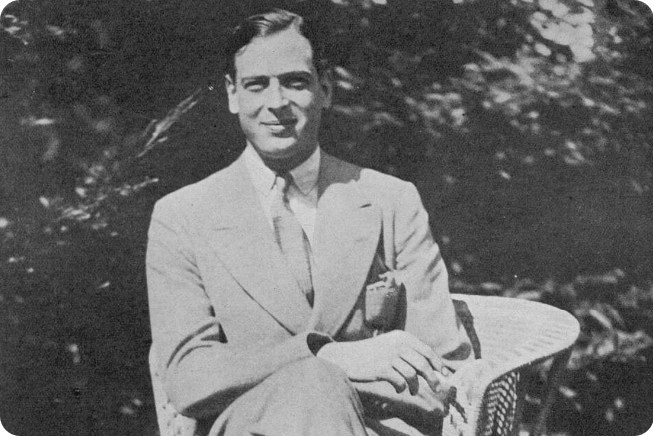
Their youngest son, Prince John, died two years before the Census following a severe epilepsy seizure aged only 13. He’d been ill for much of his life, though this was only disclosed after his death.
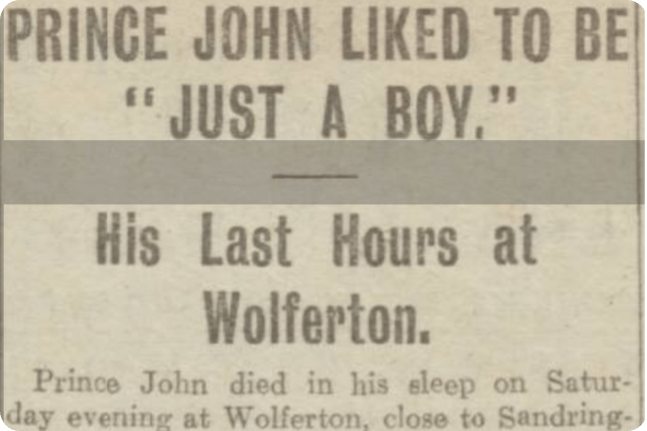
Just one of many contemporary newspaper reports on the passing of Prince John. Dundee Evening Telegraph, 20 January 1919. It was perhaps strange for the family to complete their Census return without their youngest son.
Princess Mary, the only daughter of George and Mary, became the patron of the Not Forgotten Association in 1921.
Princess Mary and her husband, Viscount Lascelles, on the front page of The Tatler, 15 March 1922. They married in 1922. Among her bridesmaids were Elizabeth Bowes-Lyon, later the wife of her brother, the Duke of York, and Diana Bridgeman (of the real-life Bridgerton fame).

Edward, Prince of Wales, ascended the throne in 1936 as Edward VIII. During the time of the 1921 Census, Edward was seeing married socialite Freda Dudley Ward.
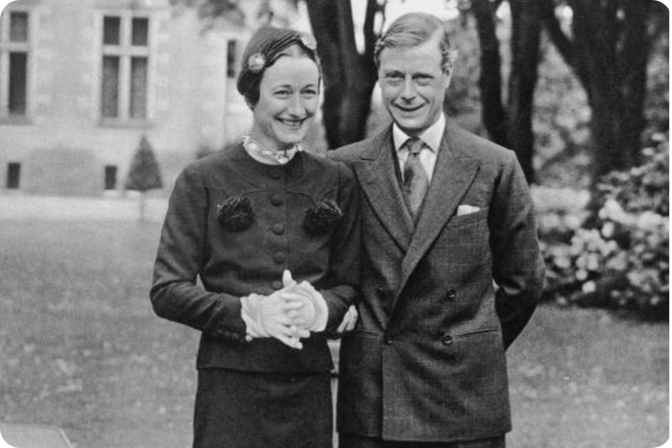
Edward, later Duke of Windsor, and his fiancée Wallis Simpson, pictured in The Sketch, 26 May 1937. He abdicated less than 12 months after becoming king to marry American divorcée Wallis Simpson. They embarked on a tour of Nazi Germany following their wedding, prompting accusations of being Nazi sympathisers.
Prince Henry tent-pegging, a cavalry sport, in 1920, pictured at the Olympia Royal Tournament in The Sphere, 5 June 1920. He joined the Army in 1919. Merely a month after the 1921 Census, he was promoted to lieutenant in the 10th Royal Hussars. He later served as Governor of Australia from 1945-1947.

Elizabeth’s II’s father Albert, later George VI, is recorded too. Aged 25 in 1921, the Duke of York began his courtship of Elizabeth Bowes-Lyon around this time.
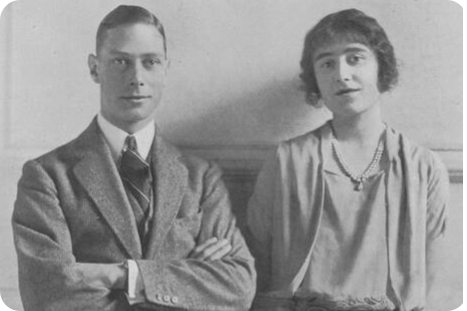
Albert, Duke of York, and his fiancée Elizabeth Bowes-Lyon, pictured here in The Sphere, 27 January 1923. They first met in 1920. He proposed twice, in 1921 and in 1922, and they married in 1923. Their first child, the future Queen Elizabeth II, was born in 1926.
Just like that, we can build up a picture of their lives. From here, we could explore what else they were doing in 1921, but for now, let’s see who else was living at Windsor Castle on the night of the Census.
Who else was in the Royal household in 1921?
Visiting Windsor Castle on 19 June 1921 was King Alfonso XIII, the 35-year-old King of Spain.
King Alfonso XIII of Spain arriving at Dover, pictured in The Daily Mirror, 17 June 1921. He would go onto attend a polo match with the Royal family. Born a king, Alfonso was the only monarch ever to be nominated for the Nobel Peace Prize due to his work with the European War Office during the First World War. He fell gravely ill during the Russian flu pandemic of 1889-1890, and again from Spanish flu in 1918.
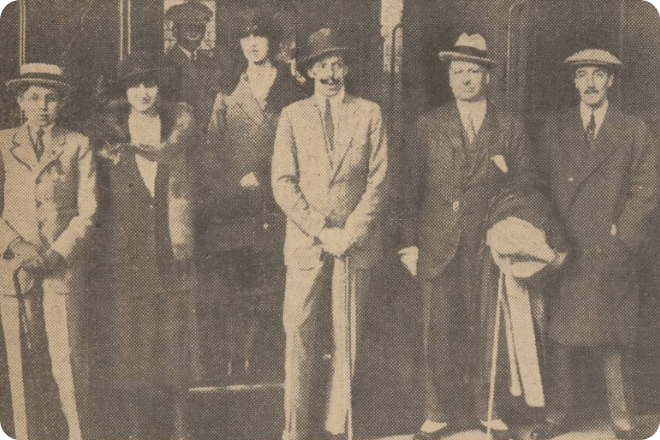
Alfonso married Victoria Eugenie, granddaughter of Queen Victoria, after visiting Edward VII at Buckingham Palace in 1905. This means Alfonso was married to George’s cousin. By 1931, the Spanish Monarchy had been abolished.
Staff such as private secretaries, librarians and equerries also made up the Royal household.
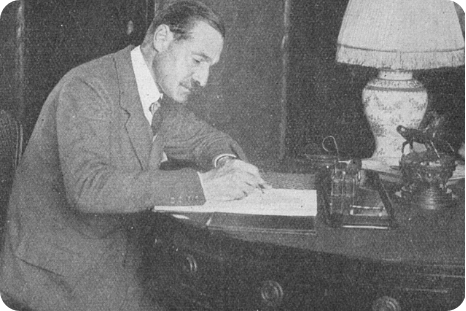
George Herbert Hyde Villiers, Earl of Clarendon, pictured in The Tatler, 1 November 1922. A lord in waiting to the King, he was later a Conservative politician and the Governor-General of the Union of South Africa.
From left, Captain Alexander Hardinge, Sir Derek Keppel, the King, Sir George Milne, Colonel Arthur Erksine, Major Seymour, Lady Isobel Gathorne-Hardy, the Dowager Countess of Airlie, the Queen, and the Duchess of Beaufort. Pictured at the Royal Pavilion, Aldershot, in The Graphic, 26 May 1928. Captain Hardinge, Sir Derek and Colonel Erskine were at Windsor Castle with the King and Queen on the night of the 1921 Census.
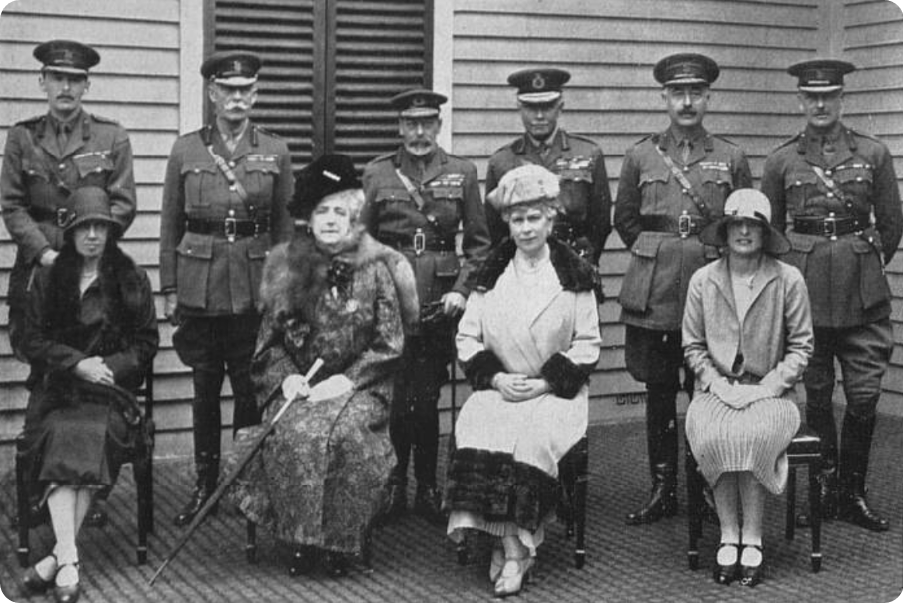
Among the King’s equerries were Lieutenant Colonel Arthur Edward Erskine and Captain Alexander Henry Louis Hardinge, who was also assistant private secretary. He was later Private Secretary to the Sovereign, Edward VIII, during the Abdication Crisis of 1936, and then for George VI during the Second World War.
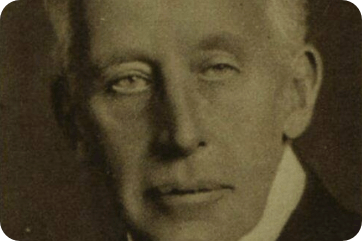
The Right Honourable Sir Frederick Ponsonby, 1st Baron Sysonby, Keeper of the Privy Purse, pictured in the Illustrated London News, 26 October 1935. He was born in 1867. His godfather was German Emperor Frederick III, son-in-law of Queen Victoria. His aunt Caroline married Prime Minister, Lord Melbourne.
‘Lord Strathmore with his Royal Guests: The Hon. Michael Bowes-Lyon, Lord Doune, The Hon. Bruce Ogilvy, The Hon. David-Bowes-Lyon, The Prince of Wales, the Duchess of York, the Earl of Strathmore, Lady Rose Leveson-Gower, and the Duke of York.’ - Bruce Ogilvy with the future Edward VIII and future George VI, pictured in The Sketch, 29 August 1923 at Glamis, Scotland.
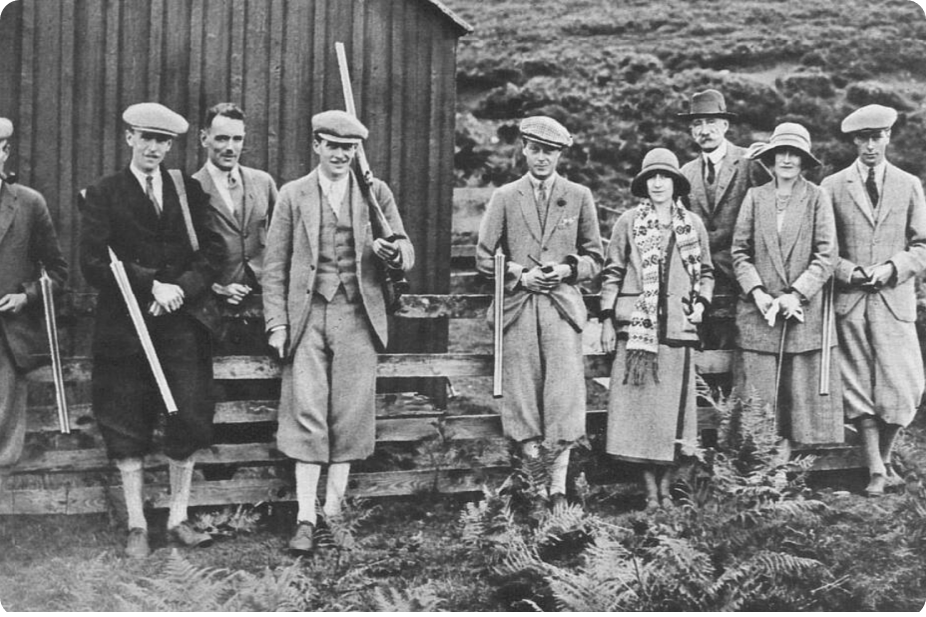
The equerry to the Prince of Wales was Bruce Ogilvy, who was also at Windsor Castle with the Royal family on 19 June 1921.
Where were the other royals in the 1921 Census?
We spotted Queen Alexandra, the Queen Mother, as a widow living with her daughter, Princess Victoria. Alexandra was the wife of King Edward VII and the mother of George V. She was known throughout her life for her fashion sense and charitable work.
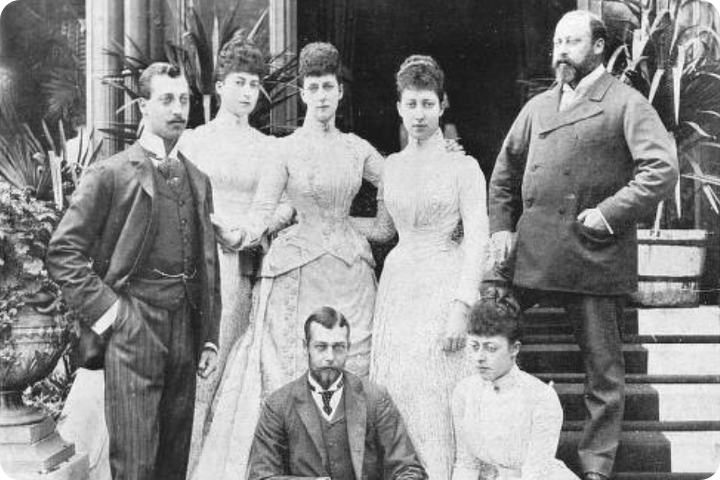
‘Over thirty years ago: The Prince and Princess of Wales and their children. From left: The late Duke of Clarence (Albert Victor), Princess Maud (now Queen of Norway), Queen Alexandra, Princess Louise (now Duchess of Fife), King Edward. Seated: Prince George (now King) and Princess Victoria.’ - an earlier photo of Queen Alexandra pictured with her husband and children from The Graphic, 6 December 1924.
Also on the Census were some of the living children of Queen Victoria and Prince Albert, including Princess Helena Christian, their fifth child, at 78 Pall Mall, with her daughter Helena Victoria.
Princess Louise was the sixth child. A prominent feminist, she was widowed in 1914 and had no children. We found her living at Kensington Palace in 1921.
Princess Louise, pictured in the Aberdeen Press and Journal, 4 December 1939, following her death aged 91 on 3 December 1939.
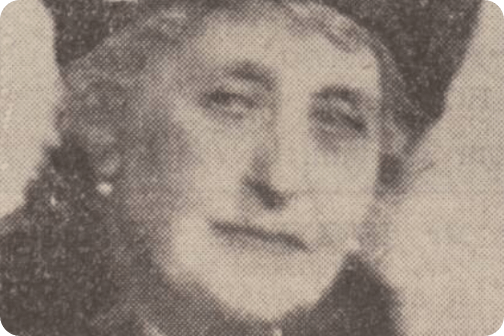
Their seventh child, Prince Arthur, was living in Bagshot, Surrey, in 1921. He was widowed in 1917. He served as Governor-General of Canada.
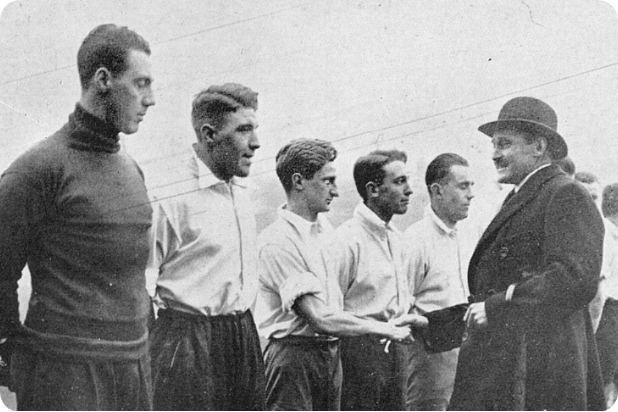
Prince Arthur of Connaught shaking hands with the England football team, pictured in The Bystander, 3 December 1924.
Princess Beatrice was the youngest child. By this point, Beatrice is a widow, living with her son Leopold Mountbatten at Clock Court, Kensington. He died the following year aged only 33 following a knee operation. She was a close companion and unofficial secretary of her mother, Queen Victoria.
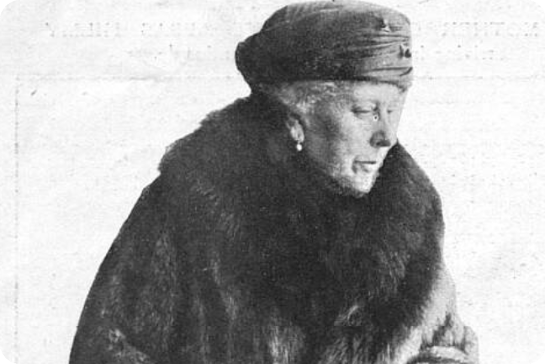
Princess Beatrice, pictured in The Graphic, 6 December 1924.
Her daughter Ena married King Alfonso XIII of Spain, who was living with her nephew the King’s family at Windsor Castle on the night of the Census. Beatrice lost her favourite son, Prince Maurice, during the First Battle of Ypres in 1914. He’d been a lieutenant in the King’s Royal Rifle Corps.
What about the servants?
There were hundreds of servants in Windsor Castle on the night of the Census. Was your ancestor among them? Take a look, and don’t forget to explore the Royal Household records too.
Valets, chauffeurs, kitchen maids... the Royal household required a skilled team of people to keep it running. We discovered Hubert Bury, the butler at Windsor Castle. We spotted personal dressers to the Queen and Princess Mary, Ada Gertrude Sibley and Annie Mary Matthews.
The King’s Own Messenger, Douglas Wallace Bruce, married the Queen’s former dresser, Louise Lesueur in late 1919. Here they are pictured in the Sunday Mirror, 11 January 1920. Douglas was around 70 at this time.

Douglas Wallace Bruce had the role of the King’s Own Messenger, while Henry Forsyth from Edinburgh was the King’s Piper. Other roles included housekeeper Mrs Amelia Rawlings (a Mrs, though she was unmarried), 1st yeoman of the silver pantry Henry Bryant, and yeoman of the wine cellar William Skene, from Aberdeenshire.
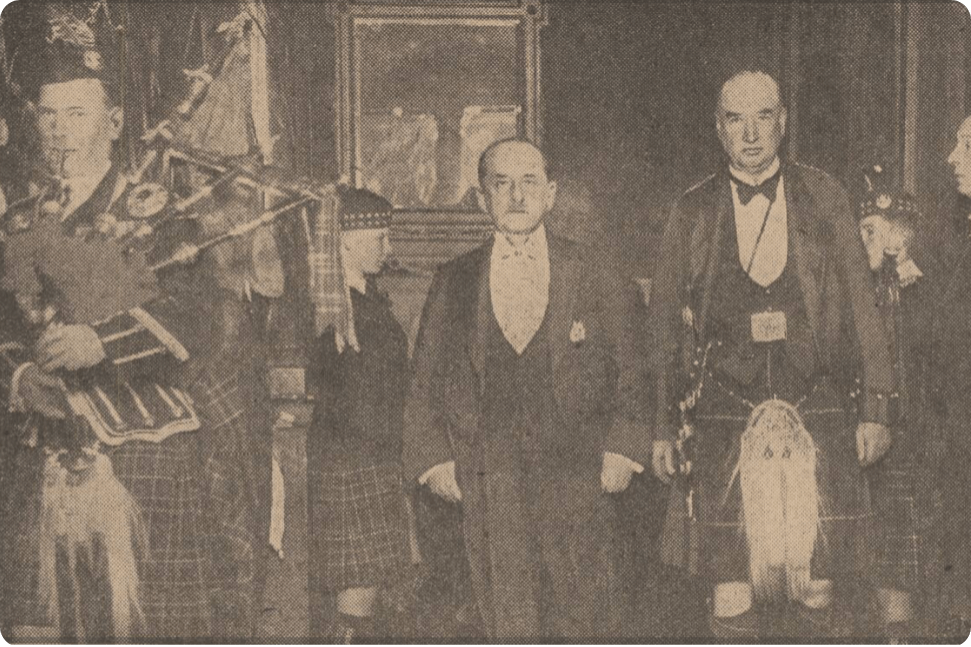
‘Henry Forsyth, The King’s Piper, piping in Sir James Barrie (centre) and Mr George Paton, vice-president of the Royal Scottish Corporation at the Corporation’s St Andrew’s Day dinner in London last night.’ - Daily Mirror, 1 December 1928.
We could continue exploring the lives of the Royal family and those living at Windsor Castle in 1921. But, you have your own stories to find, your own family secrets to uncover.
Discover 101 cultural figures in the 1921 Census
View this map full screenShare your 1921 Census discoveries with us on Facebook, Twitter and Instagram using the hashtag #1921Census. Where will your past take you?
Related articles recommended for you
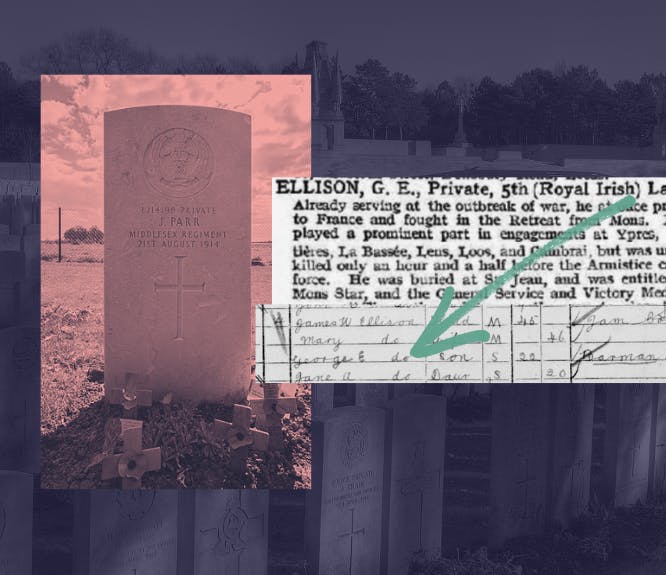
Remember their story: the first and last British soldiers killed in the First World War
History Hub
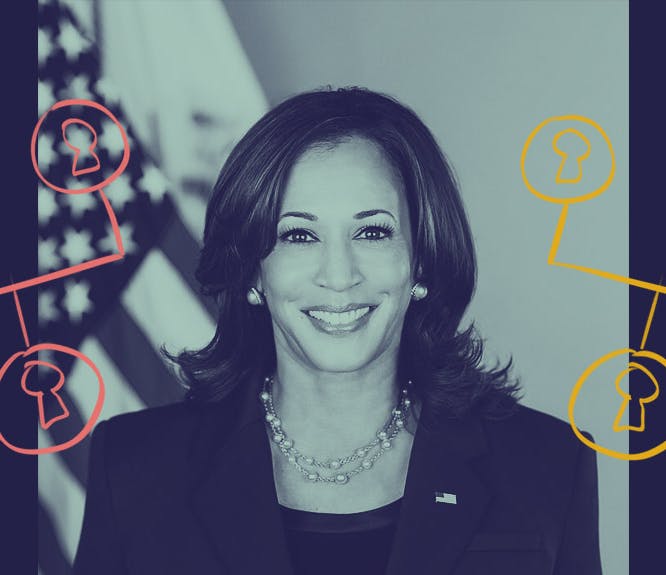
Kamala Harris' family tree tells a tale of migration and education
Discoveries
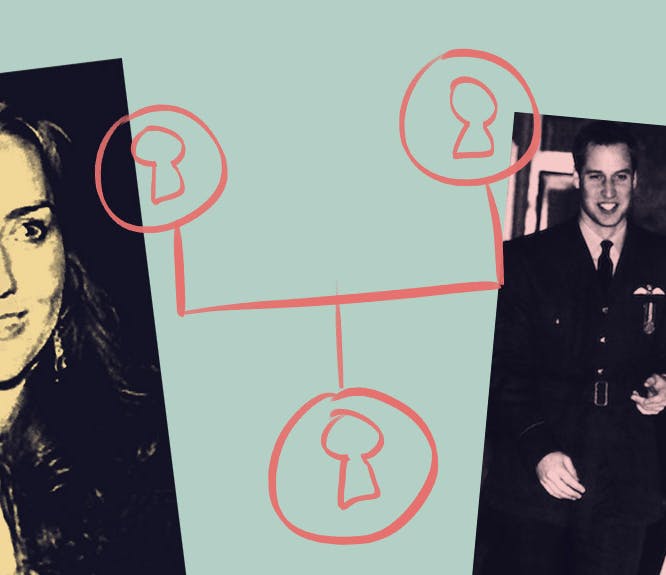
Labourers and landed gentry: Kate Middleton’s family tree
Discoveries
